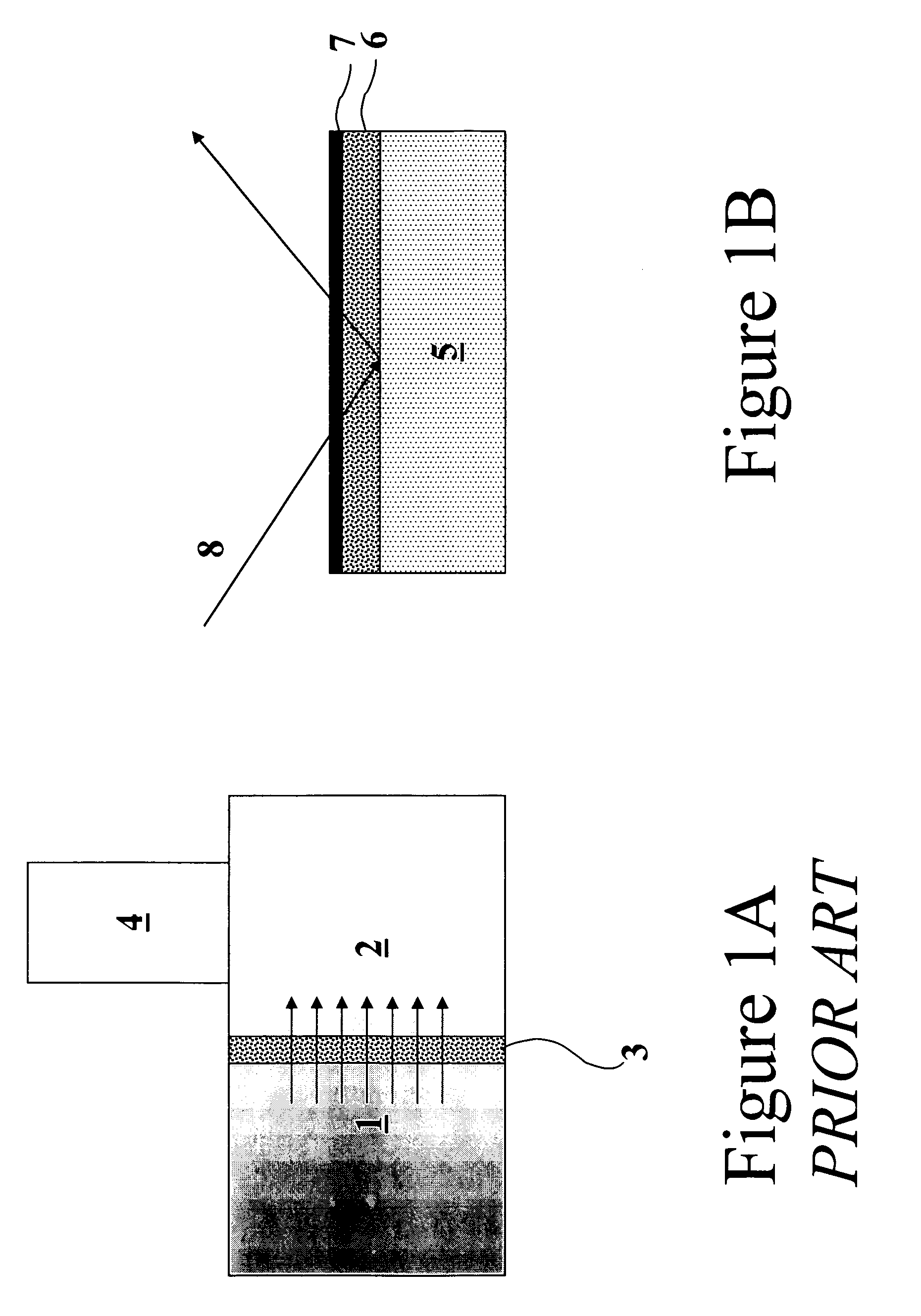Method for determining solvent permeability of films
- Summary
- Abstract
- Description
- Claims
- Application Information
AI Technical Summary
Benefits of technology
Problems solved by technology
Method used
Image
Examples
example 1
Ellipsometric Measurements to Determine Diffusion Rate of Water in a Hydrophilic and Hydrophobic SiCO(H) Low-k Material
[0053]FIG. 2A illustrates the change of pressure in the pressurizable chamber as a function of time for a first SiOC material (A).
[0054]FIG. 2B shows the change in absorptive mass (solvent) as a function of time for the first SiOC material (A) and for a second SiOC material (D). The first SiOC material (A) can, according to this example, be a hydrophobic SiOC(H) low k-material. The second SiOC material (D) can, according to this example, be a (pre-treated) hydrophilic low-k SiOC(H). For the second SiOC material (D) the change in (vapor) pressure is the same as the absorbed mass of solvent. In the case of the second SiOC material (D) the diffusion rate is thus the same as the change in pressure and therefore the process is limited by absorption (not diffusion). In the first SiOC material (A), the absorption / desorption rate is much smaller than in the second SiOC mate...
example 2
Determination of the Amount of Water Permeated through a Top Coating used in Immersion Lithography Using a NCS (NanoClustered Silica) Layer as Container Layer
[0055]A NanoClustered Silica (NCS) layer, used in semiconductor processing as a dielectric material, is used in this experiment as an absorption or container layer 6. The NCS layer 6 is coated onto a substrate 5; the thickness of the NCS layer 6 is 400 nm and has a porosity (P) of 30%. The NCS container layer 6 is covered by a top coating 7. The top coating 7 is used in immersion lithography as a protective coating for photosensitive layers. Subsequently the container layer (NCS) 6 is completely saturated with water by transferring the substrate 5 into a pressurizable chamber, which is filled with water vapor, which diffuses through the top coating 7 (FIG. 3A, absorption region) into the NCS layer 6. Then the pressure in the chamber is pumped down very fast (dashed curve in FIG. 3B shows change of pressure) to desorb the water ...
PUM
| Property | Measurement | Unit |
|---|---|---|
| Pressure | aaaaa | aaaaa |
| Pressure | aaaaa | aaaaa |
| Hydrophilicity | aaaaa | aaaaa |
Abstract
Description
Claims
Application Information
 Login to View More
Login to View More - R&D
- Intellectual Property
- Life Sciences
- Materials
- Tech Scout
- Unparalleled Data Quality
- Higher Quality Content
- 60% Fewer Hallucinations
Browse by: Latest US Patents, China's latest patents, Technical Efficacy Thesaurus, Application Domain, Technology Topic, Popular Technical Reports.
© 2025 PatSnap. All rights reserved.Legal|Privacy policy|Modern Slavery Act Transparency Statement|Sitemap|About US| Contact US: help@patsnap.com



